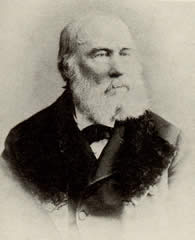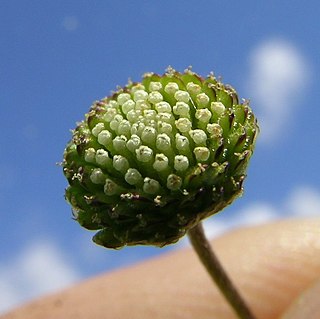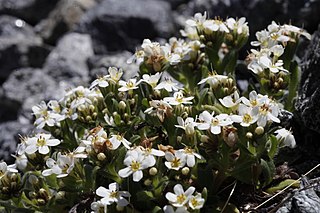
Sir William Jackson Hooker was an English botanist and botanical illustrator, who became the first director of Kew when in 1841 it was recommended to be placed under state ownership as a botanic garden. At Kew he founded the Herbarium and enlarged the gardens and arboretum. The standard author abbreviation Hook. is used to indicate this person as the author when citing a botanical name.

Walter Hood Fitch was a botanical illustrator, born in Glasgow, Scotland, who executed some 10,000 drawings for various publications. His work in colour lithograph, including 2700 illustrations for Curtis's Botanical Magazine, produced up to 200 plates per year.

Ferdinand Lucas Bauer was an Austrian botanical illustrator who travelled on Matthew Flinders' expedition to Australia.

William Henry Harvey, FRS FLS was an Irish botanist and phycologist who specialised in algae.

Robert Wight was a Scottish surgeon in the East India Company, whose professional career was spent entirely in southern India, where his greatest achievements were in botany – as an economic botanist and leading taxonomist in south India. He contributed to the introduction of American cotton. As a taxonomist he described 110 new genera and 1267 new species of flowering plants. He employed Indian botanical artists to illustrate many plants collected by himself and Indian collectors he trained. Some of these illustrations were published by William Hooker in Britain, but from 1838 he published a series of illustrated works in Madras including the uncoloured, six-volume Icones Plantarum Indiae Orientalis (1838–53) and two hand-coloured, two-volume works, the Illustrations of Indian Botany (1838–50) and Spicilegium Neilgherrense (1845–51). By the time he retired from India in 1853 he had published 2464 illustrations of Indian plants. The standard author abbreviation Wight is used to indicate this person as the author when citing a botanical name.

Acacia elata, the cedar wattle or mountain cedar wattle, is a tree found in eastern Australia.

Cotula australis is a species of plant in the daisy family known by the common names bachelor's buttons, annual buttonweed, southern waterbuttons and Australian waterbuttons. This small plant is native to Australia and New Zealand, but it is known in other areas of the world as a common weed.

Grayia spinosa is a species of the genus Grayia in the subfamily Chenopodioideae of the flowering plant family Amaranthaceae, which is known by the common names hop sage and spiny hop sage. It is widely distributed across the Western United States, where it grows in a number of desert and mountain habitats.
General remarks, geographical and systematical, on the botany of Terra Australis is an 1814 paper written by Robert Brown on the botany of Australia. It is significant as an early treatment of the biogeography and floristics of the flora of Australia; for its contributions to plant systematics, including the erection of eleven currently accepted families; and for its presentation of a number of important observations on flower morphology.

Isopogon ceratophyllus, commonly known as the horny cone-bush or wild Irishman, is a plant of the family Proteaceae that is endemic to the coast in Victoria, South Australia and on the Furneaux Group of islands in Tasmania. It is a small woody shrub that grows to 100 cm high with prickly foliage. It is extremely sensitive to dieback from the pathogen Phytophthora cinnamomi
The Botany of Fuegia, the Falklands, Kerguelen's Land, Etc. is a description of the plants discovered in these islands during the Ross expedition written by Joseph Dalton Hooker and published by Reeve Brothers in London between 1845 and 1847. Hooker sailed on HMS Erebus as assistant surgeon. It was the second in a series of four Floras in the Flora Antarctica, the others being the Flora of Lord Auckland and Campbell's Islands (1843-1845), the Flora Novae-Zelandiae (1851–1853), and the Flora Tasmaniae (1853–1859). They were "splendidly" illustrated by Walter Hood Fitch.

The Botany of Lord Auckland's Group and Campbell's Island is a description of the plants discovered in those islands during the Ross expedition written by Joseph Dalton Hooker and published by Reeve Brothers in London between 1844 and 1845. Hooker sailed on HMS Erebus as assistant surgeon. It was the first in a series of four Floras in the Flora Antarctica, the others being the Botany of Fuegia, the Falklands, Kerguelen's Land, Etc. (1845–1847), the Flora Novae-Zelandiae (1851–1853), and the Flora Tasmaniae (1853–1859). They were "splendidly" illustrated by Walter Hood Fitch.

Sapindoideae is a subfamily of flowering plants in the soapberry family, Sapindaceae. It includes a number of fruit trees, including lychees, longans, rambutans, and quenepas.

Isopogon linearis is a small shrub in the family Proteaceae that is endemic to the southwest of Western Australia.

Peperomia leptostachya, commonly known as slender peperomia or hairy peperomia, is a small succulent herb in the pepper family Piperaceae found in most parts of the Paleotropic floristic kingdom, from Africa through Asia to Australia and the western Pacific.

Myosotis albiflora is a species of flowering plant in the family Boraginaceae, native to southern Chile and Argentina. This species was described by Joseph Banks and Daniel Solander in Joseph Dalton Hooker's 19th century work Flora Antarctica. Plants of this species of forget-me-not are perennial and have white corollas. It is one of two native species of Myosotis in southern South America, the other being M. antarctica.

Myosotis lyallii is a species of flowering plant in the family Boraginaceae, endemic to New Zealand. Joseph Dalton Hooker described the species in 1853. Plants of this species of forget-me-not are perennial with a prostrate habit, bracteate or partially-bracteate inflorescences, and white corollas.















